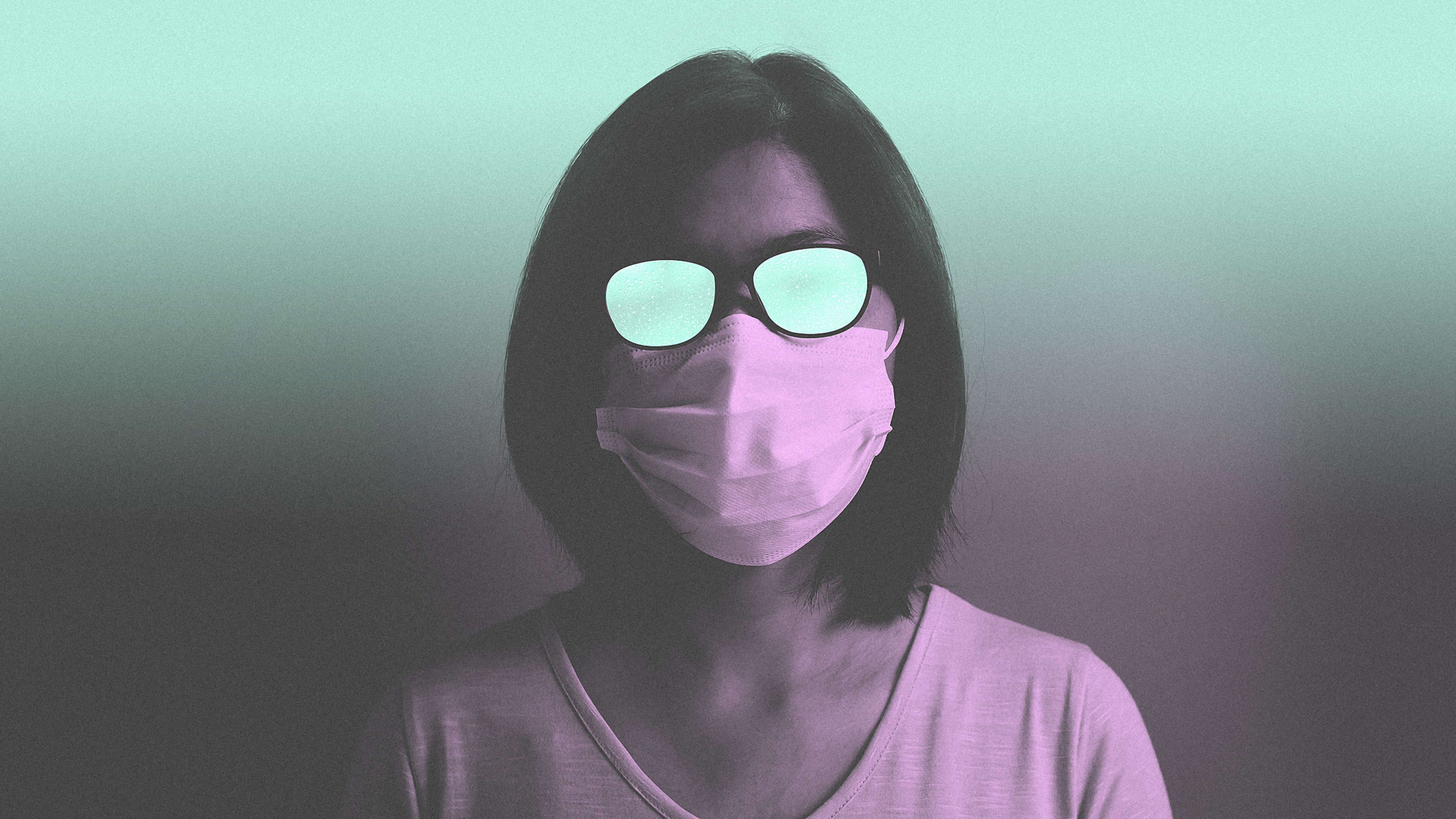On Friday, the Centers for Disease Control and Prevention officially recommended that Americans wear cloth masks when they go outside. So began the great DIY rush of 2020, in which Americans everywhere started crafting masks out of stuff lying around the house, using patterns they found online. One problem: Many of the patterns are one-size-fits-all, and they don’t work well for the two-thirds of Americans who wear glasses.
My friend Kathy, for instance, spent the weekend diligently making several masks only to realize that they cloud up her glasses whenever she wears them. “I’m only wearing the mask when out in public,” she says. “If my glasses fog up, I just take off my glasses and walk around half blind.”
She’s not the only one having problems. Dan Formosa, a designer with extensive experience in creating medical masks, explains that this is a common problem in mask design. Every time you take a breath, you let out half a liter of air into the atmosphere. Very few masks—even professionally designed ones—create a perfect seal around the face. When there are gaps on the bridge of the nose and upper cheeks, this hot air comes out of your nose and mouth, fogging up the glasses. Formosa says that DIY masks, made with things like bandanas or T-shirts, make it even harder to prevent air from escaping upward. “It’s very hard to create a flat seal around the nose area, in particular, because the physiology of people’s noses varies so widely,” he says.
This fogging is annoying, but it could also be dangerous. It often prompts the wearer to touch his or her face to adjust or wipe their glasses, which could increase the risk of transmitting the virus from the fingers to the face. This would be completely counterproductive to wearing a mask in the first place. But don’t despair. There are several things you can do to decrease the amount of fog you create on your glasses. None of these solutions are perfect, and each comes with a trade-off. But they will help you through the next few months.
Absorb the moisture
One solution is to create an absorbent layer between your nose and your eyes to effectively soak up any moisture before it can fog up your glasses. A folded-up piece of tissue paper could do the trick. This was an idea that circulated around Japan, where people commonly wear masks throughout the year to reduce the spread of illnesses. The problem here is that it can be a little annoying to try to keep the tissue in place, and it may cause you to keep touching your face to readjust it or keep it from falling off. If you really want to keep the tissue in place, Formosa proposes uses medical tape to keep it firmly stuck to your nose, but he admits this might be awkward. “You just don’t want to put yourself in a situation where you’re putting yourself more at risk,” he says.
Use a metal noseclip
In medical masks, like the N95, there is sometimes a metal nose clip that allows you to create a better seal around your nose to prevent moisture from entering or leaving the mask. If you have a homemade mask, you can try to create a similar mechanism by incorporating a metal piece that can be adjusted to the shape of your nose. Some people have been using pipe cleaners or paperclips. Formosa recommends using the metal fasteners that are typically used to keep papers together in a paper folder. You can incorporate these into some DIY mask designs for a better fit at the top. However, it is important to be very careful here, since these metal pieces will be very close to your eyes and could cause a serious accident if they get dislodged.
Create space for air
Another solution is to allow air to escape from the side of the mask or the cheek area, rather than the top. The downside of this approach is that it creates a lot less coverage, which makes the mask less effective at catching droplets from your mouth and preventing them from landing on the ground, or the person you’re interacting with at the grocery store. But if you create a mask that is strategically designed to let air billow out and escape from the sides, it is less likely to come out from the top and interfere with your glasses. In Japan, for instance, the Metropolitan Police Department suggests folding the top quarter of your mask down, so air doesn’t escape close to your lenses.
Treat your glasses with chemicals
You could treat your glasses with a chemical that will reduce misting. One simple solution mentioned in the journal of the Royal College of Surgeons of England suggests washing your glasses with soapy water, which will leave a thin film on the surface. That creates what’s called a “surfactant effect,” which makes it less likely that air will condense on the lens. The effect doesn’t last indefinitely, so you will find yourself regularly washing your glasses if you want to use this approach. Or alternatively, you could use antifog spray that prevents condensation. The downside here is that you will be exposing yourself to chemicals, some of which are known to cause eye irritation.
Recognize your brand’s excellence by applying to this year’s Brands That Matter Awards before the early-rate deadline, May 3.
